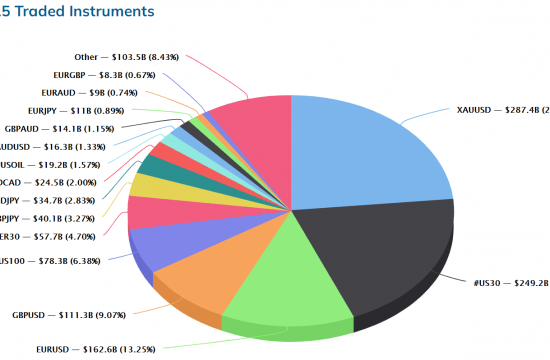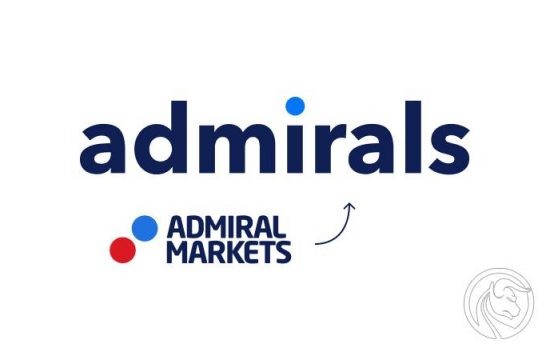 Speech by Ms Ho Hern Shin, Assistant Managing Director (Banking and Insurance), Monetary Authority of Singapore at The Association of Banks in Singapore’s Financial Crime Seminar on 18 July 2018
Speech by Ms Ho Hern Shin, Assistant Managing Director (Banking and Insurance), Monetary Authority of Singapore at The Association of Banks in Singapore’s Financial Crime Seminar on 18 July 2018
- Distinguished guests, ladies and gentlemen – Good morning to you. It is my honour to join you today at the ABS Financial Crime Seminar.
- I would like to first thank the ABS team for working tirelessly to put this meaningful event together yearly. For many of you, I believe this would likely not be the first ABS financial crime seminar that you are attending. I trust that the insights that you have gained from past seminars have led to positive changes to how you carry out your work.2018 in review
- As an international financial centre and trading hub, our fight against money laundering and terrorism financing is a continuing priority. We cannot rest on our laurels. We need to remain vigilant to emerging risks and trends. At this seminar last year, MAS shared how we as regulator and industry can do better by working more collaboratively, and by identifying and addressing higher risk areas. I would like to use this opportunity to take stock of our progress on these two fronts in the past year. Three developments are noteworthy.
- First, the AML/CFT Industry Partnership, was set up slightly over a year ago. ACIP is a platform for law enforcement, regulator and industry to come together regularly to share information and to collaborate on AML/CFT initiatives. By combining law-enforcement and regulatory insights with the industry’s “ground” knowledge of the business and clients, ACIP has helped to expand our understanding of emerging risks and typologies. This is a much improved “eco-system” approach to dealing with ML/TF risks.
- As you would be aware, ACIP recently launched two Best Practice Papers on the abuse of legal persons and trade-based money laundering. These were topics jointly identified by ACIP industry members and ourselves as higher risk area to address together. Though the papers were published fairly recently, we have received feedback that the industry finds them useful and practical. Some banks have begun to incorporate the best practices in their policies and processes. A recent ABS training seminar on trade-based money laundering, which incorporated the key insights of the ACIP paper, was also over-subscribed. I would like to commend ACIP and the workgroups for the tremendous effort put into collating their collective experience into these very useful papers. I urge all financial sector professionals, beyond those in the AML/CFT compliance function, to take reference from it, learn from the typologies and tips shared in this rich resource, if not already doing so. Please also encourage your service providers, partners and even friends in non-financial sectors, such as lawyers and corporate service providers, to draw inspiration from it as useful.
- Second, MAS has sharpened our AML/CFT supervisory approach. Our thematic based inspections and supervisory visits have allowed us to connect the dots more quickly across FIs to spot key risks and best practices. Our sharing through these visits have helped the industry raise vigilance and controls against targeted risk areas. For instance, in the area of proliferation financing, or PF, criminals continue to misuse front companies, to trade with prohibited entities or countries. As a result of a series of supervisory visits focused on PF risks, some banks we visited have adopted additional measures to identify and mitigate their PF risks. This includes corroborating shipping information provided by customers with sources form third party service providers, such as Lloyd’s List, and the International Maritime Bureau. Some banks have also taken proactive steps to conduct a comprehensive review of their customer databases, to identify customers who have previously transacted with individuals or entities of proliferation concern, for closer scrutiny and review. MAS will publish our key findings from these thematic visits, so the broader industry can learn from the good practices and areas for improvement identified.
- Third, Singapore is an active participant at the Financial Action Task Force, recently taking up the co-chair position at its Policy Development Group. Singapore’s participation allows us to be apprised of international developments. Our interactions with other FATF members also allows us to gain practical insights which in turn enrich our discussions at ACIP and other industry engagement platforms. It has also allowed us to contribute our industry insights towards global standard setting. In addition to our participation at FATF, MAS, alongside other Singapore authorities, has continued to collaborate with our foreign counterparts on supervisory and law-enforcement matters relating to financial crimes.Towards a more focused approach to combating financial crime
- Our accomplishments over the past year have laid a strong foundation for us to go further. There is more that we can do, for greater effectiveness in combating financial crime. I would like to suggest two focus areas for the coming year.
- First, stronger leverage on technology. We have in the past year come together to identify key risk areas to work on jointly. We did this by leveraging on our collective experiences, wisdom and knowledge. Technology, and in particular data analytics, can significantly augment our ability to identify higher risk areas, and both the industry and MAS have begun to invest great efforts to tap on it.
- As mentioned in April’s ACIP Dialogues, which many of you would have attended, DBS is leading a working group to identify opportunities for applying data analytics for AML CFT purposes, and good practices to consider when doing so. They will be publishing their report shortly. Without taking too much from Chee Kin’s presentation, I would like to commend the working group for grappling with a number of thorny issues, such as “black boxes” – where a model’s internal workings are opaque to the user, as a result of which the output of the model cannot be explained by the user. For each of these issues, the working group will be suggesting useful solutions or mitigants. I am also looking forward to the working group’s recommendations on areas in data analytics where the government and private sector can collaborate fruitfully. I understand that one promising early suggestion relates to exploring ways to nurture and channel coding and analytics talent into applied fields such as combating financial crime.
- MAS has also enhanced our use of analytical tools to enable us to make sense of the vast amount of data that we have. In particular, MAS is in receipt of more than 25,000 STRs filed annually by our regulated financial institutions. Applying data analytics to this data set has enabled us to identify suspicious funds flow networks, and focus our supervisory attention on networks of higher risk accounts, entities or activities. While the results thus far have been promising, we hope to further refine and fine-tune our processes by improving the quantity and quality of our source data inputs. To this end, MAS is working closely with the Suspicious Transaction Reporting Office (STRO) on the re-design of the STR forms and implementation of the new STRO Online Notices And Reporting platform (SONAR). We would like to remind all financial institutions to adopt the revised STR form and reporting platform, which would be implemented in August. The new STR form and reporting platform will improve the richness and machine readability of STR data. This will in turn, enable more in depth and efficient analysis and management of risks for our collective benefit.
- A second focus area for the coming year will be even closer collaboration, both within the government and with industry. This continues to be mission-critical for our fight against financial crime. Regular sharing of information by all stakeholders improves situation awareness, helps us spot emerging risks quickly and devise effective mitigating measures.
- With this in mind, the government has formed an inter-agency working group, comprising supervisory bodies and law enforcement agencies. Its goal is to deepen our collective understanding of key ML/TF risks, prioritise cases for investigation, and facilitate enforcement against ML/TF cases. The industry will also benefit from our work here, as we will share the key typologies and risks identified. The group has already begun its work, and I look forward to its successful outcomes.
- In terms of closer collaboration with industry, the ACIP platform has been helpful. As we enter into year two for ACIP, there have been calls for case-specific, investigative collaboration between the public and private sector. Some jurisdictions, such as Australia and the UK, have embarked on this path under the auspices of their public-private partnership. In Singapore, regulators and law enforcement agencies are in close and constant contact with our financial institutions for assistance on specific cases, whether be it through information requests from MAS, or feedback provided by law enforcement agencies on specific typologies. However, there is room to improve the public-private collaboration on this, for example through the sharing of more detailed context so as to enable FIs to mount more targeted checks. We are now actively considering how we can improve the process of information sharing with financial institutions for this purpose.
- Finally, let me invite you to take a step back with me to consider the issue of access to banking. As banks adopt more fine-grained and sophisticated techniques to identify and mitigate ML/TF risks, I would like to urge you to be similarly discerning in your decisions with regard to opening and maintaining customer relationships, and to building an open, inclusive and innovative Singapore.
- Besides being commercial enterprises, banks fulfil important roles in society, such as providing access to basic financial services. Even though Singapore is a highly-banked country, there are pockets of society that still appear to be excluded. For example, we would occasionally receive feedback from ex-offenders who have been denied a bank account. In today’s increasingly digital economy, an individual’s access to a bank account linked to card facilities is a bare necessity. It is required for salary crediting, paying bills electronically and even just conducting simple, day-to-day transactions such as paying for transport, groceries and meals. Government assistance is also paid through the banks – your banks.
- I recognise that mitigating the risk of money-laundering or terrorism financing presented by certain groups of customers can be more challenging. To be clear, we stand with banks that the misuse of bank accounts for illicit purposes should not be condoned. However, it is important to strike a balance between addressing ML/TF risks and meeting basic banking needs. Banks should not avoid entire classes of customers altogether. This is consistent with taking a risk-based approach to AML/CFT, where banks assess each customer’s transaction profile on a case-by-case basis, to identify specific ML/TF risks and assess if they can be adequately mitigated.
- In building a more inclusive society with greater financial participation, it is not our intention to burden banks with disproportionate monitoring of bank accounts. To this end, we would like to work with banks to co-create solutions, for example, to explore the feasibility of introducing basic bank accounts for individuals with features and restrictions that, on one hand, are sufficiently permissive to enable the customer to perform daily functions, while at the same time ensuring there are adequate safeguards to mitigate the risks of the bank account being misused.
- Let me conclude by emphasising once again the importance, firstly, of adopting a sharper, more risk-targeted approach to AML/CFT, and assessing how data analytics methods can support this goal; and secondly, of deepening cooperation amongst all participants in the financial sector, both public and private. We look forward to working closely with industry in the coming year in these areas. With that, let me wish you a fruitful conference, and a great day ahead. Thank you.











